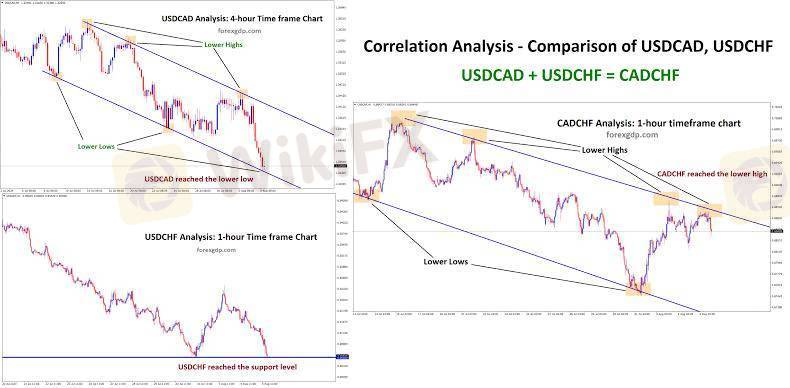
2025-04-28 11:06
IndustryEarly warning systems for currencycrashes
#CurrencyPairPrediction
Early warning systems for currency crashes aim to predict potential sharp devaluations or significant losses of a country's foreign exchange reserves. These systems typically involve monitoring a range of macroeconomic and financial indicators that historically have shown unusual behavior before a currency crisis. When these indicators breach certain threshold levels, they generate a "signal" indicating an increased risk of a future currency crash, usually within a 12 to 24-month horizon.
Several key indicators are commonly used in these early warning systems. Declining foreign exchange reserves are often considered one of the most reliable warning signs, as they indicate a reduced capacity of the central bank to defend the currency. A real exchange rate significantly deviating from its trend can also signal overvaluation, making the currency vulnerable to a sharp correction. Rapid domestic credit growth, especially when directed towards the public sector, can fuel inflation and external imbalances, increasing crisis risk. High domestic inflation rates erode a currency's competitiveness and value.
Furthermore, asset market bubbles, particularly in the real estate or equity markets, financed by excessive credit, can create vulnerabilities. A deteriorating current account balance, reflecting consistent trade deficits, indicates a growing reliance on foreign capital, which can become unsustainable. High levels of short-term external debt relative to reserves or exports increase the risk of a liquidity crisis if investors become unwilling to roll over the debt. Political instability or significant policy uncertainty can also trigger capital flight and currency depreciation.
The effectiveness of early warning systems is a subject of ongoing research. While certain indicators have shown predictive power across different episodes, no single indicator is foolproof. False positives (signals that are not followed by a crisis) and false negatives (crises that occur without prior signals) are inherent limitations. Moreover, the specific thresholds for generating signals can vary across countries and over time. Therefore, these systems are best used as part of a broader surveillance framework, combined with qualitative analysis and expert judgment, rather than as definitive predictors of currency crashes.
Like 0
joon844
Trader
Hot content
Industry
Event-A comment a day,Keep rewards worthy up to$27
Industry
Nigeria Event Giveaway-Win₦5000 Mobilephone Credit
Industry
Nigeria Event Giveaway-Win ₦2500 MobilePhoneCredit
Industry
South Africa Event-Come&Win 240ZAR Phone Credit
Industry
Nigeria Event-Discuss Forex&Win2500NGN PhoneCredit
Industry
[Nigeria Event]Discuss&win 2500 Naira Phone Credit
Forum category

Platform

Exhibition

Agent

Recruitment

EA

Industry

Market

Index
Early warning systems for currencycrashes
 Malaysia | 2025-04-28 11:06
Malaysia | 2025-04-28 11:06#CurrencyPairPrediction
Early warning systems for currency crashes aim to predict potential sharp devaluations or significant losses of a country's foreign exchange reserves. These systems typically involve monitoring a range of macroeconomic and financial indicators that historically have shown unusual behavior before a currency crisis. When these indicators breach certain threshold levels, they generate a "signal" indicating an increased risk of a future currency crash, usually within a 12 to 24-month horizon.
Several key indicators are commonly used in these early warning systems. Declining foreign exchange reserves are often considered one of the most reliable warning signs, as they indicate a reduced capacity of the central bank to defend the currency. A real exchange rate significantly deviating from its trend can also signal overvaluation, making the currency vulnerable to a sharp correction. Rapid domestic credit growth, especially when directed towards the public sector, can fuel inflation and external imbalances, increasing crisis risk. High domestic inflation rates erode a currency's competitiveness and value.
Furthermore, asset market bubbles, particularly in the real estate or equity markets, financed by excessive credit, can create vulnerabilities. A deteriorating current account balance, reflecting consistent trade deficits, indicates a growing reliance on foreign capital, which can become unsustainable. High levels of short-term external debt relative to reserves or exports increase the risk of a liquidity crisis if investors become unwilling to roll over the debt. Political instability or significant policy uncertainty can also trigger capital flight and currency depreciation.
The effectiveness of early warning systems is a subject of ongoing research. While certain indicators have shown predictive power across different episodes, no single indicator is foolproof. False positives (signals that are not followed by a crisis) and false negatives (crises that occur without prior signals) are inherent limitations. Moreover, the specific thresholds for generating signals can vary across countries and over time. Therefore, these systems are best used as part of a broader surveillance framework, combined with qualitative analysis and expert judgment, rather than as definitive predictors of currency crashes.
Like 0
I want to comment, too
Submit
0Comments

There is no comment yet. Make the first one.

Submit
There is no comment yet. Make the first one.